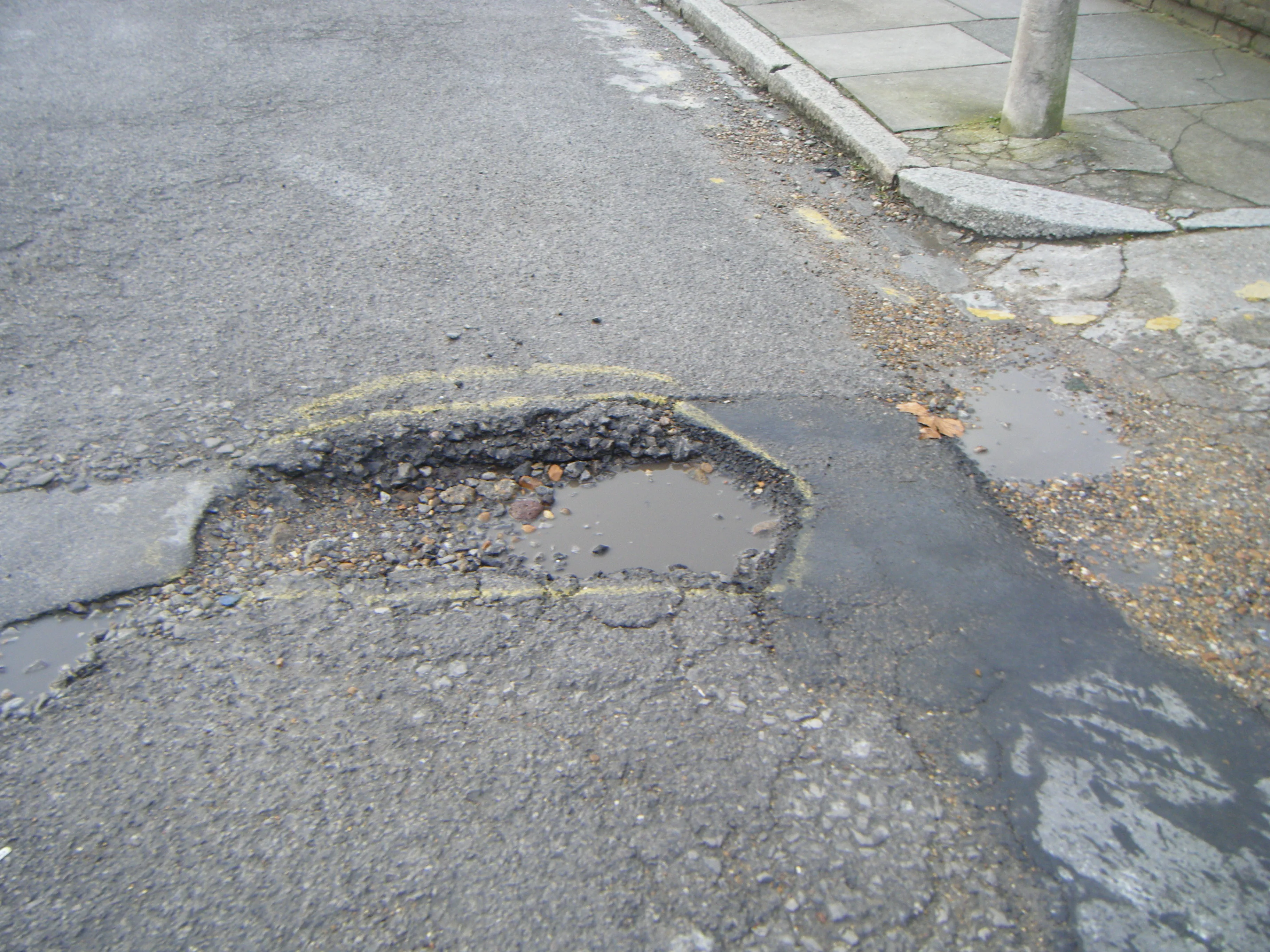Limited highways maintenance budgets can deliver more with a planned asset management approach - *Will Baron. In recent years, a growing number of local and highways authorities have found themselves trapped in a vicious cycle of reactive road repairs. Several bad winters, floods and years of under-investment have taken their toll on road networks. This has led to political and public pressure to patch up potholes and make emergency repairs, ultimately diverting funds away from planned highways maintenance.
August 21, 2015
Read time: 4 mins

Limited highways maintenance budgets can deliver more with a planned asset management approach - *Will Baron
In recent years, a growing number of local and highways authorities have found themselves trapped in a vicious cycle of reactive road repairs. Several bad winters, floods and years of under-investment have taken their toll on road networks. This has led to political and public pressure to patch up potholes and make emergency repairs, ultimately diverting funds away from planned highways maintenance.
The trouble with this approach is that not only is it much more expensive – costing at least 20 times more/m2 to fill a pothole than it does to resurface a road – but it also causes authorities to get trapped in a never-ending reactive cycle that is hard to get out of. While an authority is reactively patching up roads and potholes, planned maintenance doesn’t take place, which leads to more potholes and emergency repairs.
With this approach, as soon as one problem is fixed, another one pops up in its place. It is effectively just like going around putting very expensive sticking plasters over the problems but never actually dealing with the cause.
The problem is that politicians and the public want a quick fix. Unfortunately, this is not going to happen, not with the current levels of investment and the amount of work that needs to be done. Authorities are already facing a huge backlog of repairs to carry out. Roads cannot be brought up to good condition overnight and even by breaking the vicious cycle and taking a planned, more effective approach, it will still take years – but it will happen. However, by carrying on with the reactive approach, roads will only get worse as budgets are used up too quickly on expensive patch repairs.
There is evidence to show that taking a planned asset management approach not only delivers the best value for money, but has the most impact on road conditions and helps to prioritise the most pressing maintenance concerns. It is based on looking at the engineering and maintenance requirements of roads and prioritising them according to need and budget.
Traditionally, road maintenance is still often seen as a technical issue to be dealt with by maintenance engineers and the economic approach tends to be used to justify capital expenditure on major road schemes. However, the University of Birmingham’s team of road asset management specialists carried out extensive research over 25 years to develop a holistic model that includes both the economic and the engineering elements of road maintenance.
This Road Maintenance Management System (RMMS) developed by the University of Birmingham inn the UK utilises user-defined defects and road condition data, together with engineering-driven and/or economically derived road maintenance standards to determine road sections requiring treatment and their priority order under budget constraints.
The latest software developed for this market segment utilises this approach and can be used by local and highways authorities to address the issue. It can be used to develop a condition-based maintenance schedule of work in under six weeks.
Highways asset management consultant Metis is already using this approach with some authorities in London in the UK, such as Croydon Council, where both patching works and larger planned maintenance programmes can be readily identified by the system in a robust and transparent manner, whilst being costed and prioritised appropriately.
Local councils and highways authorities need to stand firm against public and political pressure to use road maintenance budgets to patch up potholes. Instead, they should demonstrate and communicate the value that can be achieved by taking a planned approach, where the most urgent problems will be fixed, in a more cost-effective way.
Authorities and highways bodies should invest instead in comprehensive road condition surveys and use an evidence-based system that employs mathematical algorithms to prioritise maintenance activities. This will maximise the return on investment (ROI). Some reactive road repairs will always be needed, but it is about getting the right balance with planned maintenance and using an asset management approach to determine priorities based on both cost and engineering criteria.
*Will Baron is product director at asset management software developer8221 Keysoft Solutions
In recent years, a growing number of local and highways authorities have found themselves trapped in a vicious cycle of reactive road repairs. Several bad winters, floods and years of under-investment have taken their toll on road networks. This has led to political and public pressure to patch up potholes and make emergency repairs, ultimately diverting funds away from planned highways maintenance.
The trouble with this approach is that not only is it much more expensive – costing at least 20 times more/m2 to fill a pothole than it does to resurface a road – but it also causes authorities to get trapped in a never-ending reactive cycle that is hard to get out of. While an authority is reactively patching up roads and potholes, planned maintenance doesn’t take place, which leads to more potholes and emergency repairs.
With this approach, as soon as one problem is fixed, another one pops up in its place. It is effectively just like going around putting very expensive sticking plasters over the problems but never actually dealing with the cause.
The problem is that politicians and the public want a quick fix. Unfortunately, this is not going to happen, not with the current levels of investment and the amount of work that needs to be done. Authorities are already facing a huge backlog of repairs to carry out. Roads cannot be brought up to good condition overnight and even by breaking the vicious cycle and taking a planned, more effective approach, it will still take years – but it will happen. However, by carrying on with the reactive approach, roads will only get worse as budgets are used up too quickly on expensive patch repairs.
There is evidence to show that taking a planned asset management approach not only delivers the best value for money, but has the most impact on road conditions and helps to prioritise the most pressing maintenance concerns. It is based on looking at the engineering and maintenance requirements of roads and prioritising them according to need and budget.
Traditionally, road maintenance is still often seen as a technical issue to be dealt with by maintenance engineers and the economic approach tends to be used to justify capital expenditure on major road schemes. However, the University of Birmingham’s team of road asset management specialists carried out extensive research over 25 years to develop a holistic model that includes both the economic and the engineering elements of road maintenance.
This Road Maintenance Management System (RMMS) developed by the University of Birmingham inn the UK utilises user-defined defects and road condition data, together with engineering-driven and/or economically derived road maintenance standards to determine road sections requiring treatment and their priority order under budget constraints.
The latest software developed for this market segment utilises this approach and can be used by local and highways authorities to address the issue. It can be used to develop a condition-based maintenance schedule of work in under six weeks.
Highways asset management consultant Metis is already using this approach with some authorities in London in the UK, such as Croydon Council, where both patching works and larger planned maintenance programmes can be readily identified by the system in a robust and transparent manner, whilst being costed and prioritised appropriately.
Local councils and highways authorities need to stand firm against public and political pressure to use road maintenance budgets to patch up potholes. Instead, they should demonstrate and communicate the value that can be achieved by taking a planned approach, where the most urgent problems will be fixed, in a more cost-effective way.
Authorities and highways bodies should invest instead in comprehensive road condition surveys and use an evidence-based system that employs mathematical algorithms to prioritise maintenance activities. This will maximise the return on investment (ROI). Some reactive road repairs will always be needed, but it is about getting the right balance with planned maintenance and using an asset management approach to determine priorities based on both cost and engineering criteria.
*Will Baron is product director at asset management software developer







